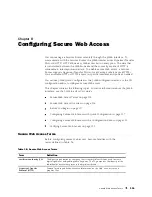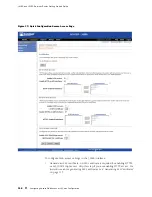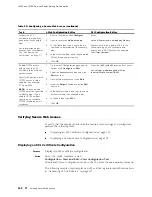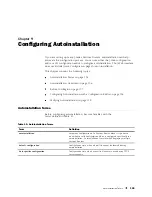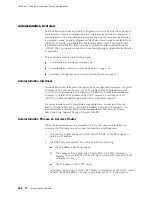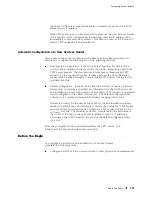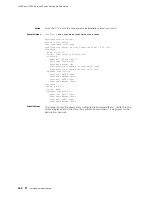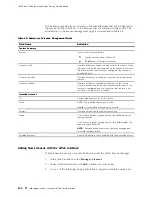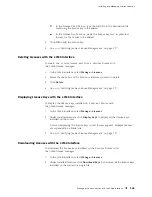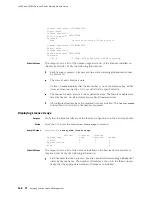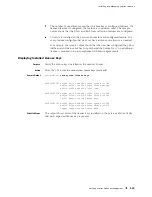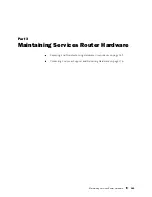
J4350 and J6350 Services Router Getting Started Guide
Autoinstallation Overview
Autoinstallation provides automatic configuration when a new Services Router is
powered on without a configuration file or for a Services Router configured for
autoinstallation. The autoinstallation process begins anytime a Services Router
is powered on and a valid configuration file is not found in the nonvolatile RAM
(NVRAM). Typically, a configuration file is unavailable when a Services Router
is powered on for the first time, or if the configuration file is deleted from the
NVRAM. The autoinstallation features is useful deploying multiple Services Router
in networks.
This overview contains the following topics:
Autoinstallation Interfaces on page 126
Autoinstallation Process on Services Router on page 126
Automatic Configuration of a New Services Router on page 127
Autoinstallation Interfaces
Autoinstallation can take place through either a management interface or a serial
interface on the Services Router. If a LAN interface with High-level Data Link
Control (HDLC) encapsulation is found on the Services Router, autoinstallation
attempts to obtain an IP address using DHCP requests, bootstrap protocol
(BOOTP), or Reverse Address Resolution Protocol (RARP) requests.
If a serial interface with Frame Relay encapsulation is connected, then the
Services Router attempts to obtain an IP address using BOOTP requests. On
a serial interface without Frame Relay encapsulation, the Services Router
uses Serial Line Address Request Protocol (SLARP).
Autoinstallation Process on Services Router
When the Services Router is powered on for the first time, autoinstallation
attempts the following on each connected interface simultaneously:
1.
The Services Router sends out DHCP, BOOTP, RARP, or SLARP requests to
obtain an IP address.
2.
If a DHCP server responds, the router obtains the following:
An IP address and subnet mask
The address of the Trivial File Transfer Protocol (TFTP), Hypertext
Transfer Protocol (HTTP), or File Transfer Protocol (FTP) server with the
configuration file
The IP address of the TFTP server
Optionally, the hostname of the TFTP server is obtained from the DHCP server.
Usually, the TFTP address or name is specified, not both. If the name is
126
Autoinstallation Overview
Содержание J4350
Страница 14: ...J4350 and J6350 Services Router Getting Started Guide xiv Table of Contents...
Страница 22: ...2 J series Overview...
Страница 68: ...J4350 and J6350 Services Router Getting Started Guide 48 Field Replaceable PIMs...
Страница 75: ...Services Router User Interface Overview Figure 25 J Web Layout Using the J Web Interface 55...
Страница 88: ...J4350 and J6350 Services Router Getting Started Guide 68 Using the Command Line Interface...
Страница 90: ...70 Installing a Services Router...
Страница 100: ...J4350 and J6350 Services Router Getting Started Guide 80 Site Preparation Checklist...
Страница 112: ...J4350 and J6350 Services Router Getting Started Guide 92 Powering a Services Router On and Off...
Страница 144: ...J4350 and J6350 Services Router Getting Started Guide 124 Verifying Secure Web Access...
Страница 160: ...J4350 and J6350 Services Router Getting Started Guide 140 Verifying J series License Management...
Страница 162: ...142 Maintaining Services Router Hardware...
Страница 194: ...J4350 and J6350 Services Router Getting Started Guide 174 Troubleshooting Hardware Components...
Страница 202: ...J4350 and J6350 Services Router Getting Started Guide 182 Packing a Router or Component for Shipment...
Страница 204: ...184 J series Requirements and Specifications...
Страница 220: ...J4350 and J6350 Services Router Getting Started Guide 200 ISDN RJ 45 Connector Pinout...
Страница 267: ...Part 5 Index Index 247...
Страница 268: ...248 Index...




